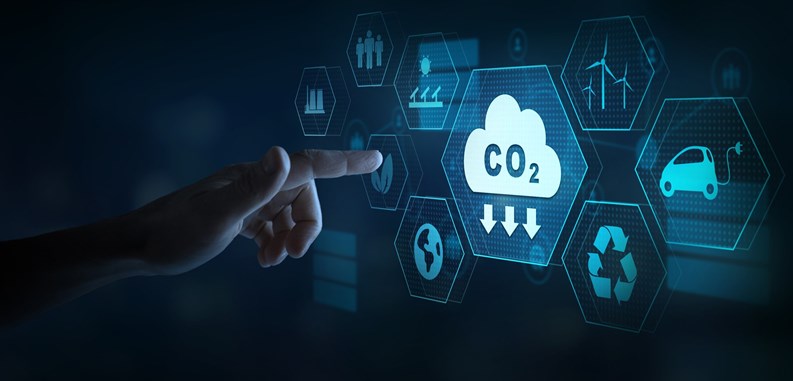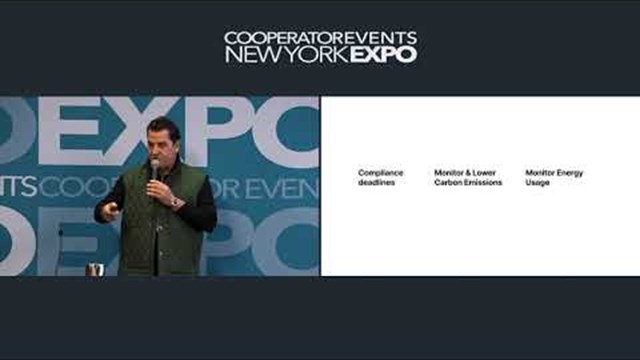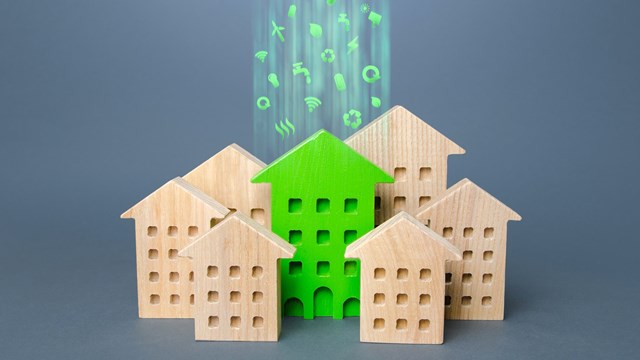Decarbonization requires considerable planning, with available funding playing a key role in determining the feasibility and prioritization of investments. While there’s no one size fits all approach, multifamily property owners will likely leverage a combination of upfront incentives, financing, and tax credits to achieve their decarbonization goals.
While decarbonizing buildings with energy efficiency upgrades, renewable energy, and all-electric equipment can deliver long-term savings for multifamily and mixed-use buildings, the upfront cost remains a barrier for implementation.
The good news is that there are multiple avenues for multifamily decision-makers to fund their decarbonization projects. New York State and utility incentives—in combination with financing geared toward clean energy and energy efficiency—can help defray upfront costs and deliver capital to start working toward a decarbonized future.
Meanwhile, the Inflation Reduction Act (IRA) is providing the funding necessary for large-scale investment in decarbonization and clean energy. This federal investment includes IRA tax credits – available through 2032–to reduce the cost of purchasing low-carbon technologies.
Small Business Financing for Multifamily Properties
Buildings of all sizes and uses can add value through decarbonization. Smaller mixed-use and multifamily buildings pursuing smaller-scale decarbonization projects can access financing for energy efficiency and renewable energy upgrades.
Property owners can leverage the savings on their energy bills after completing efficiency upgrades and installing clean energy systems to finance their project. Known as on-bill recovery financing, this loan product can provide borrowers with up to $50,000 for building upgrades.
To finance projects with greater capital needs, a participation loan is another option that can deliver more than $100,000 in funding for heat pumps, on-site solar, or energy efficiency improvements.
NY Green Bank Financing
NY Green Bank offers loan products to support sustainable infrastructure projects that advance New York’s clean energy transition. Investment opportunities cover a wide range of technologies and market segments, including renewable energy generation, clean transportation, energy storage, affordable housing, and building decarbonization.
Housing developer, e2i, borrowed from NY Green Bank against State and utility energy efficiency incentives to secure $8 million in financing to build and retrofit all-electric and affordable multi family homes. The housing projects will be equipped with efficient and electric HVAC and hot water systems, electric vehicle charging, and high-performance building envelopes.
“[NY Green Bank] worked with us to create a solution that works for our current company size and a structure that will scale as we grow as a business,” says Adam Serbert, President and Founding Partner at e2i.
Launched in 2023, the Community Decarbonization Fund is directing $250 million in NY Green Bank capital into clean energy projects, building decarbonization, and related small businesses that benefit disadvantaged communities. Community development financial institutions and nonprofits that perform lending activities are eligible to apply. With this flexible concessionary financing, these mission-driven lenders can expand clean energy financing opportunities, especially for smaller projects, in communities across New York.
Commercial Property Assessed Clean Energy (C-PACE)
Commercial Property Assessed Clean Energy, or C-PACE, provides long-term financing to fund up to 100% of renewable energy and energy efficiency improvements in commercial and multifamily buildings. Unlike traditional financing, the capital is repaid over time through a special assessment on the annual property tax bill. This means that the assessment transfers with the sale of the property as well.
C-PACE financing has a proven track record for funding energy improvements in the U.S., with nearly $7.2 billion in loans originated nationally in 2023, according to PACE Nation. Around 55% of C-PACE investment in 2023 funded energy efficiency improvements—a key first step in building decarbonization.
On-site renewable energy generation, all-electric building systems like cold-climate heat pumps, and resiliency upgrades (if identified in an assessment and in combination with renewables or electrification) are also eligible improvements with C-PACE. Payback on building decarbonization investments is aided by the fact that the loan term can be structured to reflect the expected life of the improvement–typically 20-30 years.
Project cost-effectiveness plays a role in eligibility, too. The cost-benefit ratio (CBR), which measures the projected energy savings and societal benefits from emissions reduction divided by the financed construction and pre-development costs, must be at least 1 for a project to be eligible–with one notable exception. The CBR requirement is waived if a building is designed to be fully electrified and in compliance with local code.
Local municipalities are responsible for authorizing C-PACE financing for property owners, though the program is managed by third-party, non-profit administrators. New York City and 76 municipalities across the rest of the state have authorized C-PACE as of February 2024.
Since becoming State law in 2009 and launching in New York City in 2019 with the passage of the Climate Mobilization Act, C-PACE has been used to finance efficiency improvements and clean energy across a range of building types, including multifamily and mixed-use properties.
The New York State General Municipal Law 5L Guidance Document, which was recently updated in June 2024, outlines the current requirements for energy audits, energy efficiency improvements, and renewable energy systems in detail.
The revised guidance is expected to spur greater C-PACE participation in 2024 and beyond, due in part to an expanded prequalified upgrades list, applicability to new construction, alignment with codes and standards, and more flexible cost-benefit determination for projects. In New York City, C-PACE represents a key opportunity for multifamily properties that need to lower their emissions to comply with the 2030 requirements under Local Law 97.
Inflation Reduction Act Tax Credits
In combination with incentives and financing that help cover the upfront costs of building decarbonization, multifamily property owners can leverage IRA tax credits to lower the cost of clean energy technologies and energy efficiency improvements.
Many critical components of decarbonization are covered by the IRA, including electric vehicles and charging infrastructure, clean heating and cooling systems, on-site renewables, and building envelope upgrades. For example, IRA tax credits can cover up to 70% of the cost of solar projects, depending on labor requirements, location, and if the project serves low-income tenants.
Geothermal heat pump systems are also eligible for significant savings through IRA tax credits. In addition to the 30% base rate (if meeting labor standards), a project could qualify for additional bonus tax credits worth 10-30% for using domestic content and being in a low-income or designated energy community.
Furthermore, geothermal heat pumps can be counted toward the energy efficient commercial building deduction, which applies to multifamily buildings that are at least four stories tall. The IRA increased the maximum tax credit for efficient buildings from $1.88 to $5 per square foot for both new and existing buildings.
Businesses can claim tax credits on the purchase of new plug-in hybrid and battery-electric vehicles, amounting to 15% and 30%, respectively. Plus, charging infrastructure is eligible for a 30% tax credit, potentially in conjunction with discounts through Charge Ready NY 2.0 for level 2 charging stations at multifamily buildings with ten or more units and at least 20 parking spaces .
Tax provisions through the IRA are set to run through 2032, though eligibility requirements are subject to change from year to year. Keeping up to date on IRS guidance is recommended to ensure decarbonization investments reflect requirements as they evolve over time.
Developing Your Funding Strategy
Combined, IRA tax credits, State and utility incentives, and financing opportunities can help plug gaps in the capital needed for decarbonization projects–both retrofits and new construction.
Decarbonization of existing multifamily buildings calls for a phased approach–a strategy that aligns with maximizing tax credits and incentives over multiple years. Similarly, flexible financing options are available that reflect the useful life of clean energy equipment or payback period for efficiency upgrades.
Incorporating these various funding opportunities into the decarbonization planning process is essential to inform and identify the most cost-effective path to a more sustainable future.
The New York State Energy Research and Development Authority (NYSERDA) can connect commercial and multifamily property owners with technical experts and resources to take the guesswork out of decarbonization










Leave a Comment